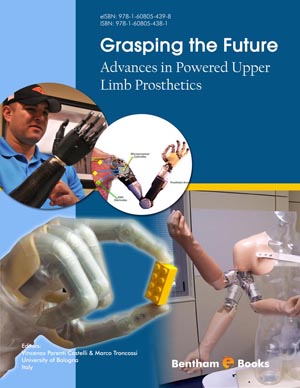Abstract
The scenario of upper-limb prosthetics is rapidly changing: innovative solutions are “moving out” from laboratories to be used by patients in the every-day-life. In particular, prosthetic hands are facing major changes, with the availability of multi-grip options. While these new technologies are potentially effective for patients, they are surely more expensive and complex in terms of mechanics, electronics and cosmetic covering, i.e. aspects that also determine an increase of maintenance costs. Since it is important to provide patients with effective components while keeping costs under control, technology assessment is crucial. In this framework, the aim of this Chapter is to provide an overview of some evaluation tools that were set-up at Centro Protesi INAIL to gain insight into the psychosocial and biomechanical aspects of upper-limb amputees using high-tech prostheses. A case study reporting the application of these tools is also presented, regarding a patient using the Otto-Bock Michelangelo hand. Results highlighted an increased satisfaction with the new multi-grip hand and, remarkably, the new prosthesis triggered a higher level of embodiment, with a mindchanging in the use the previous hand as well. Thanks to pleasant appearance and functional features of Michelangelo, the patient started to assume more natural gestures and postures also with the traditional myoelectric hand, reporting this different way of thinking the prosthesis as “a fundamental step for an amputee”. Regarding the biomechanical assessment, the shoulder biomechanics was positively influenced by the availability of the lateral grip and by the overall hand shape, which allowed the patient to approach cylindrical and coin-shaped objects in a more natural way, limiting the shoulder compensatory movements. Overall, the assessment tools that we set-up provided a valid contribution for the systematic analysis of the changes taking place in the amputee due to the use of new technologies. The broad on-the-field experimentation will ultimately prove the validity of the approach.
Keywords: Amputation, Upper Limb, Prosthetic Arm, Hand, Myoelectric Control.






















